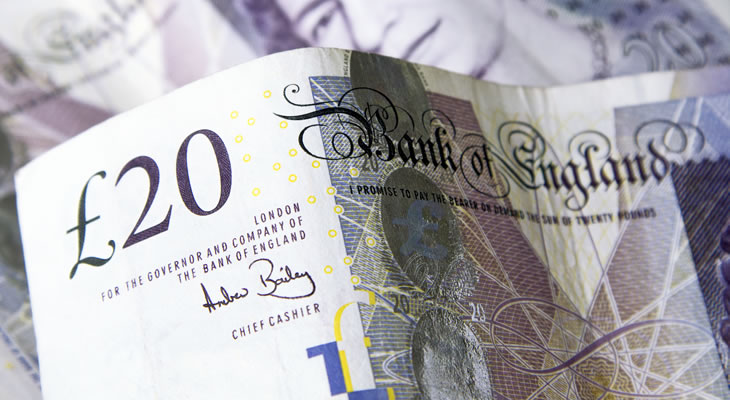Pound to Canadian Dollar Exchange Rate Outlook Influenced by Brexit Uncertainty
Despite the poor Canadian ecostats published last week, the Pound to Canadian Dollar (GBP/CAD) exchange rate tumbled and the pair may struggle to recover unless there are some optimistic Brexit developments soon.
Last week saw GBP/CAD fall over a cent, from 1.7543 to 1.7394. Following February’s Bank of England (BoE) policy decision, GBP/CAD briefly surged to 1.7651, but shed its gains on Friday as Brexit concerns worsened again.
The Pound (GBP) tumbled on Friday as EU chief negotiator Michel Barnier noted that a presumed post-Brexit transitional period was not necessarily a done deal – despite a transition having been essentially priced into the Pound.
This was due to objections and disagreements between the UK and EU on certain parts of the transition agreement so far, some of which the EU has claimed are non-negotiable.
Amid fresh uncertainty about the likelihood of a transitional period, the Pound slumped with investors growing more concerned that UK-EU negotiations will fail to secure a strong post-Brexit deal.
Canadian Dollar (CAD) Strengthens Despite poor Canadian Job Stats
Last week’s Canadian ecostats disappointed investors, but despite this the Canadian Dollar (CAD) was able to advance against a weak Pound.
Friday’s Canadian job market results from January fell short of expectations in many key prints, including the unemployment rate and employment change figures.
Canada’s key unemployment rate unexpectedly worsened to 5.9% despite being forecast to come in at 5.8%. The previous figure was disappointingly revised higher too, from 5.7% to 5.8%.
This was despite the participation rate unexpectedly dropping from 65.8% to 65.5%, indicating that jobs were being lost and less people were participating in the job market.
January’s employment change figure was forecast to come in at 10k but instead printed a disappointing contraction of -88k.
However, GBP/CAD fell on Friday and was unable to advance on Monday. This was largely due to higher demand for risk-correlated currencies like the Canadian Dollar.
As global equity markets recovered from a brief selloff last week, investors have found risky investments more appealing again and this helped the Canadian Dollar to hold its ground.
Pound to Canadian Dollar (GBP/CAD) Outlook Forecast to be Driven by Brexit Developments
While some key UK data will be published in the coming sessions, they may not be hugely influential as the current pressure on the Pound and Bank of England (BoE) interest rate hike bets is caused by Brexit uncertainties.
Tuesday will see the publication of Britain’s January Consumer Price Index (CPI) report, which is forecast to have slipped slightly but have remained strong overall year-on-year.
The core inflation rate is actually forecast to have risen, from 2.5% to 2.6%.
Typically, a strong inflation report would lead to stronger Pound demand. However, as the Bank of England has already predicted that UK inflation will be strong and has instead warned about Brexit uncertainty, high inflation may not impact the Pound outlook much.
Friday’s UK retail sales results from January may give investors a better idea of how the Brexit process is affecting UK retail activity, but is also unlikely to generally be hugely influential with Brexit uncertainties still in focus.
Ultimately, the Pound to Canadian Dollar (GBP/CAD) exchange rate is most likely to be influenced by Brexit developments, particularly any signs that UK and EU negotiators will be able to smoothly work out deals on a transition period. This would boost Sterling.
The Canadian Dollar won’t be influenced much by data in the coming days either and is more likely to react to global market elements like risk-sentiment and commodity prices.


Comments are closed.